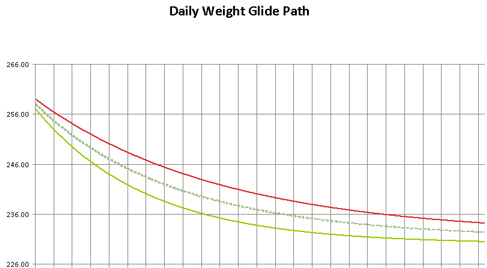
This is the first in a short series of posts arising from the Dalai Lama’s recent visit to Vermont.
So the Dalai Lama walks into the room, and he says “I always consider we are the same human being. Physically, mentally, emotionally, we are the same. I believe it is extremely important we have this feeling or concept–oneness of humanity–because a lot of problems are essentially our own creation.” (Note: I’ve paraphrased that a little.)
 The room was kind of a large one–actually, an arena. The Dalai Lama was speaking at the Nelson Recreational Center in Middlebury last Saturday. I sat about 60 feet away, close enough to exercise my dazzling photography skills and get this fuzzy phone cam shot you see to the left. If you’d like to watch the event for yourself, there’s good video footage of the whole thing here, courtesy of Middlebury College.
The room was kind of a large one–actually, an arena. The Dalai Lama was speaking at the Nelson Recreational Center in Middlebury last Saturday. I sat about 60 feet away, close enough to exercise my dazzling photography skills and get this fuzzy phone cam shot you see to the left. If you’d like to watch the event for yourself, there’s good video footage of the whole thing here, courtesy of Middlebury College.
Getting tickets for this event was like trying to get into a sold-out rock concert. The morning the tickets went on sale, I got up early, went to my computer, and sat there pressing the refresh button until the ticket purchase page finally showed up for me, 45 minutes later. I believe their servers were a little overwhelmed. This investment of time and button-pushing was nothing compared to what I received from the experience. One of the things I received was some glint of understanding of how you and I the Dalai Lama are the same.
There’s some obvious truth to the idea that we’re the same: after all, we’re all human. We all have human frailties and limitations, and we have commonalities that range from our natural environment and the air we breathe to literature to neurotransmitters to basic needs to genetics and history. According to Buddhist thought (at least, according to my very limited apprehension of it), any distinction between two humans is arbitrary. There is no clear line of division.
Yet it’s hard to make much use of that idea when you compare how most of us deal with the world to how the 14th Dalai Lama deals with the world. He faces very difficult truths with compassion and humor. He tells hundreds or thousands of people about peeking in someone’s medicine cabinet even though he knew it was, in his words “a little illegal,” or about regretting how he spent much of his youth, and he laughs at himself with genuine mirth and acceptance. For most of us, accepting the worst things about the world or ourselves is a lot more challenging than that. Even on our best days, most of us can’t come near radiating the joy and compassion that comes from the Dalai Lama.
So I have to conclude that something does separate us, something worth knowing about. I think I finally began to get a clue as to what that thing was when His Holiness was answering questions at the end of the presentation. Someone asked him about the problem of dying with awareness when the norm these days is often to pump dying individuals full of pain medications. In response, the Dalai Lama said
That I think … we have to examine case to case. Those individuals who have some sort of … practice and experience, then it is very, very important to keep sharp mind … clear mind.
The word that struck me here was practice. There’s no question that we’re just as human whether or not we’ve spent time meditating or trying to be more aware of ourselves, but having a meditation practice, working hard at understanding ourselves, taking time each day to think about who we are and what we’re trying to do in the world–these things allow us to access different moods, different behaviors, different reactions–an entirely different side of ourselves. My impression is that the Dalai Lama has worked diligently for many years to develop this side of himself. I’ve worked much less diligently for much less time, and perhaps the same is true of you. Yet there is nothing stopping either of us from realizing that side of our humanity, so that we’re not just one with the Dalai Lama, but also are increasingly able to see the world in the same way he does.
Top photo by Sarah Harris









